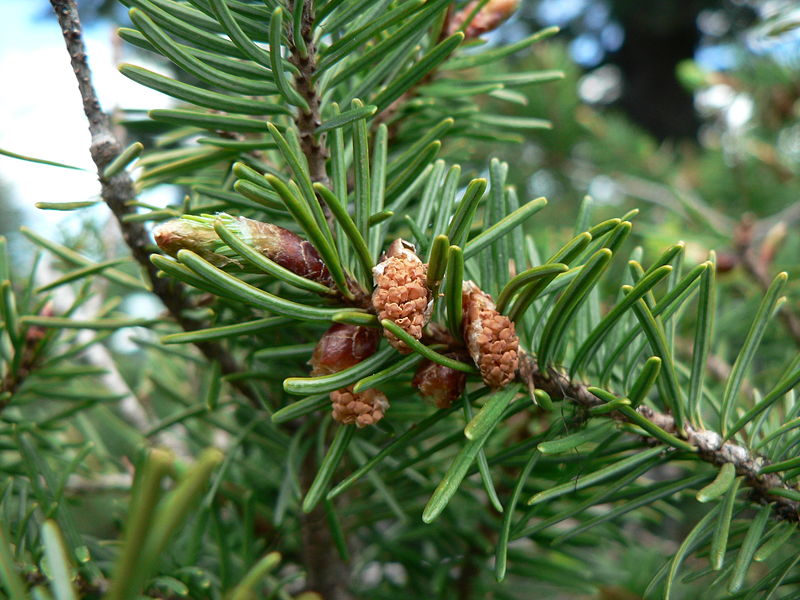Life Cycle and Reproduction
The full reproductive cycle of the Coast Douglas Fir takes about
17 months to complete, beginning in early April and eventually
ending in late September of the next year. During this
reproductive cycle both sexual and asexual reproduction are
taking place. The Coast Douglas Fir is also monoecious or
hermaphroditic meaning it contains both the male and female
parts necessary for reporducation to take place, all within the
same plant.
1. Seasonal growth starts in April with the beginning of bud
growth. 2. During May and June the buds grow and burst,
forming the bud primordia. 3. From July to November the leaf,
bract and microsporophyll begin to immerge. 4. Once March hits
again, meiosis begins to take place and the pollen starts to
develop. 5. In April the cone buds finally flower and the
pollination of the seed cones takes place. 6. During May and
June fertilization takes place and the seed cones grow at a
rapid pace. 7. From August to September the embryo and the
seeds are developing. 8. By late September the cones have
matured and they shed their seeds.
Cones The Coast Douglas
Fir reaches maturity and begins producing cones at 12 to 15
years old. The male cones are usually about 2 centimeters long
and are a yellow or dark red color. The female cones are a bit
larger at about 3 centimeters long and are green or dark red in
color. The female cones have large bracts and can start
pollination soon after they develop. By mid-September the cones
have fully matured and the seeds have ripened. The mature cones
are

 then 8 to 10 centimeters in size and the bracts turn brown
once the seed is also mature. Once cone maturity is reached seed
fall begins. By the end of October 2/3 of the total amount of
seeds have fallen and by the following spring the rest of the
seeds will have fallen. The number of cones produced each year
is dependent on numerous variables. It depends heavily on the
number of primordia that develop into actual buds. Harsh frosts
and insects are also responsible for destroying the seed cones
before they reach maturity. Older trees have the advantage of
producing more cones then the younger ones.
then 8 to 10 centimeters in size and the bracts turn brown
once the seed is also mature. Once cone maturity is reached seed
fall begins. By the end of October 2/3 of the total amount of
seeds have fallen and by the following spring the rest of the
seeds will have fallen. The number of cones produced each year
is dependent on numerous variables. It depends heavily on the
number of primordia that develop into actual buds. Harsh frosts
and insects are also responsible for destroying the seed cones
before they reach maturity. Older trees have the advantage of
producing more cones then the younger ones.
Seeds
The seed size is determined before fertilization even takes place, but there is little variation in seed size coming from one tree. Germination of the seeds takes place from mid-March to early April, but during the first year the seed growth occurs at a very slow pace. Due to the high amounts of moisture the seed growth is halted in midsummer until April of the following year. The ideal conditions for seed germination consist of moist, mineral rich soil. During the first year the seedling prefer light shade, but as they get older they need full sunlight. Much like the cones, the seedlings have factors that can affect their numbers including being eaten by insects, birds or other animals, competing with other plant species for resources and land, or having to deal with inadequate environmental conditions. Regeneration also depends on the amount of competition with other species, as well as on weed control.
This page was created by Morgan Cook
Contact me at:
cook.morg@students.uwlax.edu
